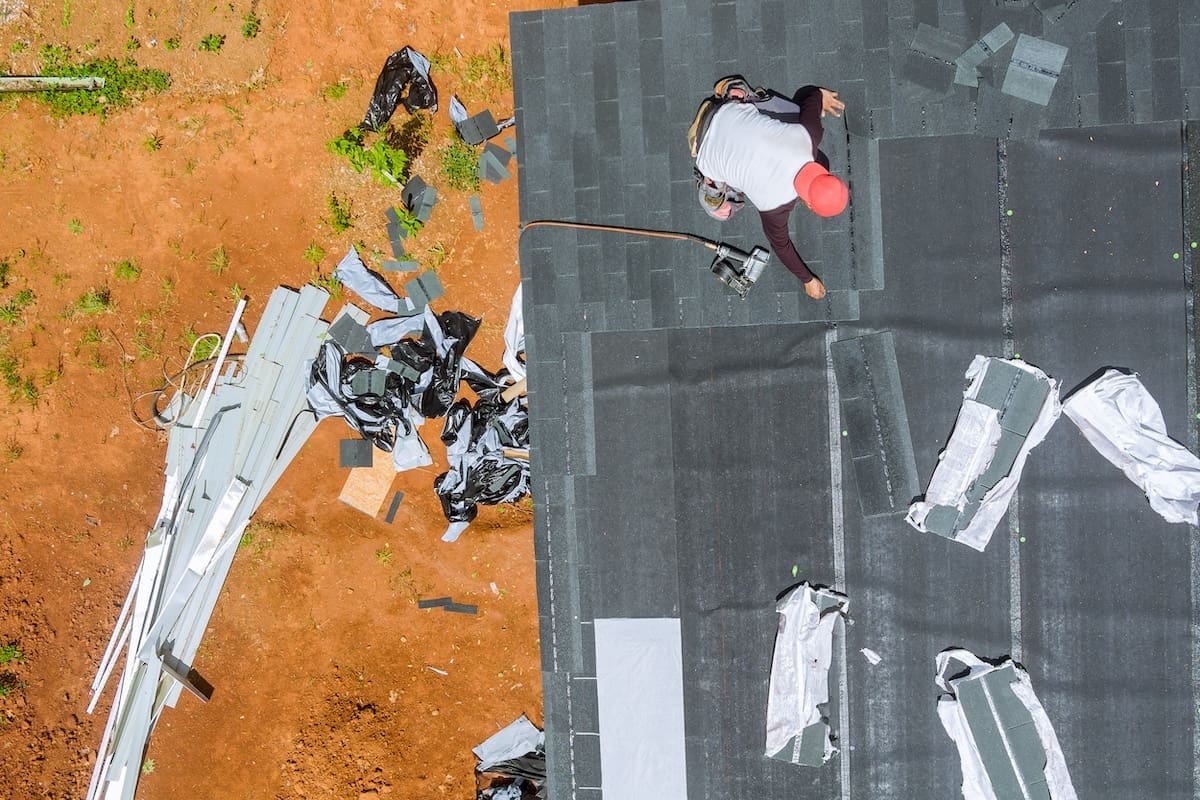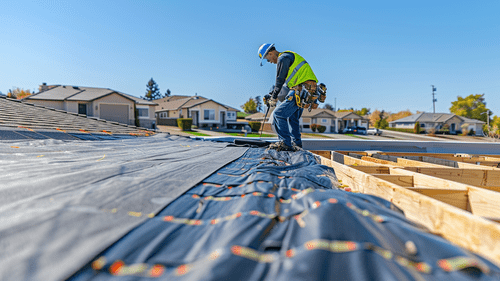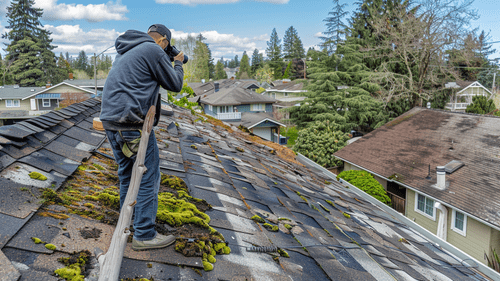Choosing the Right Roofing Underlayment for Your Home
Choosing the right roofing underlayment is a crucial decision that often leaves homeowners scratching their heads. With a multitude of options available, how do you ensure your choice supports long-term roof health and performance? This article aims to untangle the complexities of roofing underlayment by exploring the essential role it plays and the various types you can choose from. Whether you're considering traditional felt or leaning toward premium synthetic options, understanding their differences can make your choice clearer.
How do timing and weather factor into this decision? And why might fall be the perfect season for roof installation? By the end of this guide, you'll understand how these elements intertwine with the durability and efficiency of your chosen underlayment. We'll also provide insights from roofing professionals, ensuring peace of mind and a roof that's built to last. With community support and professional guidance, you're not alone in making this important decision. Let's explore how you can achieve a dependable roofing solution without any high-pressure sales pitch.
Understanding Roofing Underlayment: The Basics
Roofing underlayment is a crucial part of the roofing system, acting as a barrier between the roof deck and the outer roofing materials. It plays a vital role in protecting homes from water infiltration, which can lead to structural damage and mold growth. Underlayment provides an extra layer of defense against the elements, ensuring any water that penetrates the shingles doesn't seep into the roof structure. This secondary barrier is essential for maintaining the integrity and longevity of your roof, offering peace of mind for homeowners.
Several types of roofing underlayment are available, each with unique benefits and characteristics. Traditional felt underlayment, or tar paper, has been a popular choice for many years due to its affordability and ease of installation. Made from a blend of asphalt and cellulose, felt underlayment provides basic protection against water and wind. However, it can tear and degrade over time, especially in challenging weather conditions. On the other hand, premium synthetic underlayment offers better durability and resistance to environmental stressors. Made from polypropylene or polyethylene, synthetic options offer superior strength, flexibility, and longevity. Understanding these differences is critical when selecting the right underlayment for your specific needs.
The Case for Premium Synthetic Underlayment
Premium synthetic roofing underlayment stands out for its exceptional performance in challenging conditions, particularly in High Wind Velocity Zones (HWVZ). Its robust construction ensures it remains intact even under strong winds, offering resilience that traditional felt can't match. It's also designed to withstand prolonged exposure to the sun without suffering from UV degradation. This feature allows it to be left exposed for up to six months, providing flexibility during the roof installation process without compromising the material's integrity.
The long-term exposure benefits of premium synthetic underlayment offer real-world advantages for homeowners. The ability to withstand extended UV exposure means that if installation delays occur, the underlayment will continue to protect the roof deck without deteriorating. This feature is valuable in regions where unpredictable weather patterns can disrupt construction schedules. Additionally, the enhanced tear resistance ensures that the underlayment effectively seals out moisture, reducing the risk of leaks and water damage. Choosing premium synthetic underlayment gives homeowners a durable and reliable roofing solution that offers both immediate and long-term benefits.
Benefits of Premium Synthetic Underlayment:
- Enhanced durability and resistance to high winds and UV exposure
- Superior tear resistance, reducing the risk of leaks
- Flexibility in installation timing due to prolonged exposure tolerance
Timing Your Roof Installation
Timing is a critical factor in roof installation, and many roofing professionals agree that fall is the best season for this task. The milder temperatures and lower humidity levels during fall provide ideal conditions for the installation process, minimizing the risk of moisture-related issues. Installing a roof during this season helps ensure the materials adhere properly, leading to a more robust and long-lasting roof. With less likelihood of rain or extreme weather, fall reduces the chances of installation delays, allowing homeowners to complete their roofing projects efficiently.
Linking the choice of underlayment with the timing of installation is crucial for achieving optimal results. Selecting premium synthetic underlayment can complement the advantages of fall installation by offering superior protection against the elements. Professional insights emphasize that combining the right underlayment and proper timing can significantly impact the roof's long-term integrity. Working with experienced roofing professionals allows homeowners to gain valuable advice on synchronizing these factors to enhance the durability and performance of their roofs. This approach ensures that every aspect of the roofing project is aligned for success, providing homeowners with a dependable roofing solution that stands the test of time.
Selecting the Right Underlayment for Your Home
Choosing the right roofing underlayment involves assessing your specific needs based on factors like climate, home structure, and budget. Homeowners should consider local weather conditions and potential environmental challenges when evaluating underlayment options. Those living in areas prone to high winds or heavy rainfall may benefit from the enhanced durability and water resistance of premium synthetic underlayment. Additionally, the structure of the home and the type of roofing materials being used can influence the underlayment decision. For example, certain roofing materials may require specific underlayment types for optimal performance and compatibility.
Engaging with local professionals and community resources can provide valuable support in making informed underlayment choices. Roofing experts can offer insights into the best practices and materials suited for your region, helping you navigate the complexities of roofing options. Services like free detailed roof inspections can identify potential issues and recommend the most suitable underlayment for your unique situation. By leveraging community support and professional guidance, you can achieve peace of mind knowing that your roofing investment is backed by expertise and integrity. This collaborative approach ensures that homeowners are equipped with the knowledge and resources needed to make confident and informed decisions, resulting in a roof that not only meets their needs but also exceeds their expectations.
Key Considerations for Selecting Underlayment:
- Local climate and environmental challenges
- Home structure and roofing material compatibility
- Professional guidance and community resources
By understanding the basics of roofing underlayment, recognizing the advantages of premium synthetic options, timing installations effectively, and selecting the right underlayment for your home, you can ensure a strong and lasting roof.
Wrapping It Up: Choosing the Right Underlayment for Your Roof
Selecting the right roofing underlayment is a commitment to your home's future health and stability. We've explored how underlayment, whether traditional felt or premium synthetic, plays a vital role in protecting your home from the elements, offering peace of mind and long-term resilience. Timing your installation in the fall can enhance the benefits of your chosen material, ensuring a robust and lasting roof.
As you consider your options, remember that understanding local climate challenges and leveraging professional insights can make a significant difference. Roofing involves aligning your choices with your home's unique needs and ensuring every decision is backed by expertise and community support. So, as you ponder your next roofing project, ask yourself: Are you ready to invest in a roof that truly stands the test of time?







